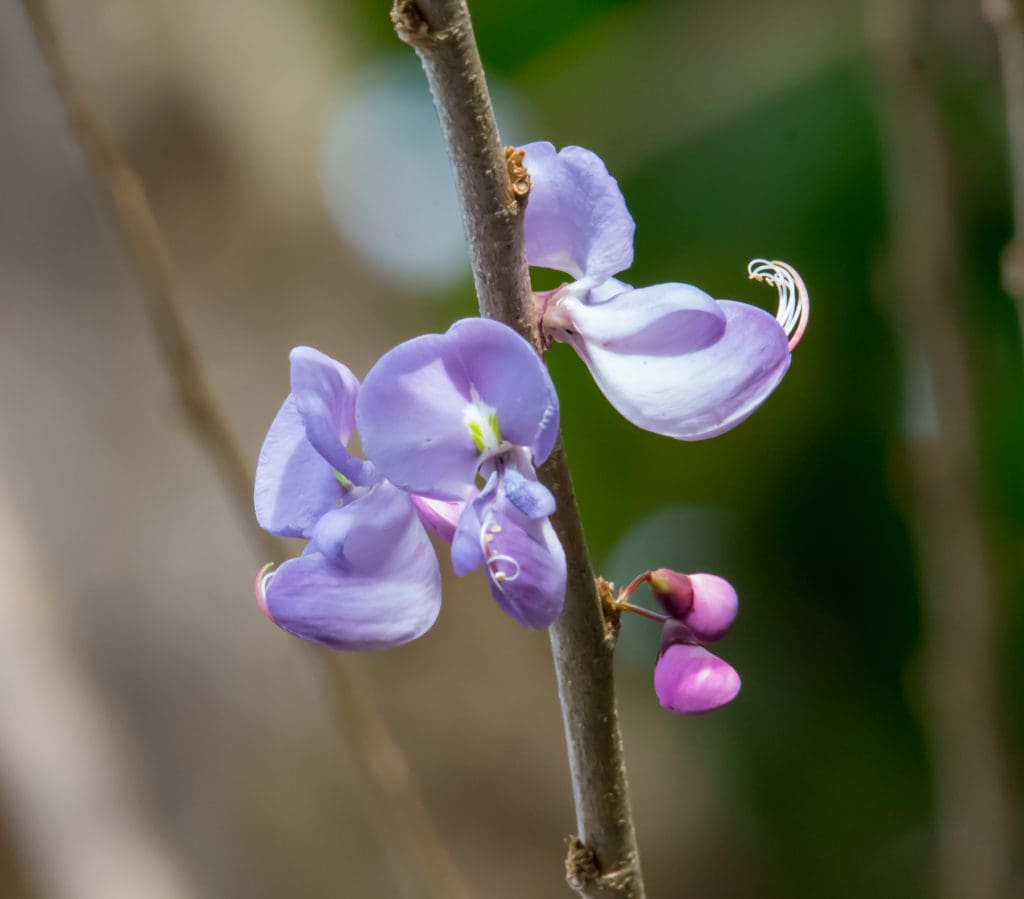
In the Virgin Islands, the pandemic time-out period coincided with a hot, dry spring – hardly any rain for months. The thermometer inside my jeep got up to 115 degrees as it sat closed up under the relentless sun.
Many of the native trees are accustomed to seasonal drought, and have shed their leaves. Others are just drooping. Like us, they reduced their activity levels, waiting for more propitious times.
In good years, heavy spring rains lift our spirits by bringing out a burst of colorful flowers on the trees, up in the hills and along the roadsides.
Wattapama flowers (Poitea florida) are local favorites. Wattapamas are thin, wispy trees that are practically invisible for most of the year, especially after they drop their small leaves. But after a soaking rainstorm breaks a dry spell they seem to magically emerge, their wand-like branches covered all over with delicate lavender flowers.
Unfortunately, this spring the rain has been sparse, and so have the Wattapama blossoms. We have had a few nighttime showers, though, which brought some of these trees to life – a very welcome sight. The lovely blossoms don’t last long though. After a few days, the petals drop to the ground, creating small drifts like purple snow.
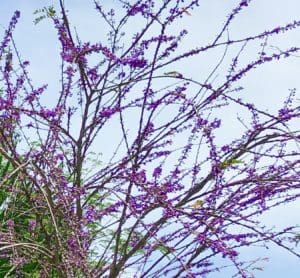
Another wispy tree, the Caribbean Dogwood (Piscidia carthagenensis) has clusters of tiny pink flowers. They can be seen high up on the tree’s thin branches after the leaves fall off in the dry season.
Despite its frailness, this tree has a dangerous reputation, which is reflected in its common name ‘fish poison’. The Caribs reportedly threw the bark of the roots and powdered leaves into the water to help them catch fish. It apparently stunned the fish so they floated to the surface, though it didn’t actually kill them. More recently, extracts from this and related trees in have been used in herbal remedies as antidepressants and pain relievers.
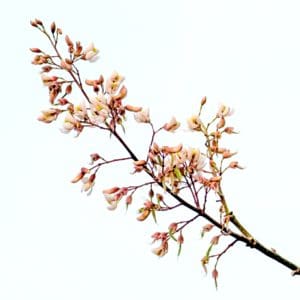
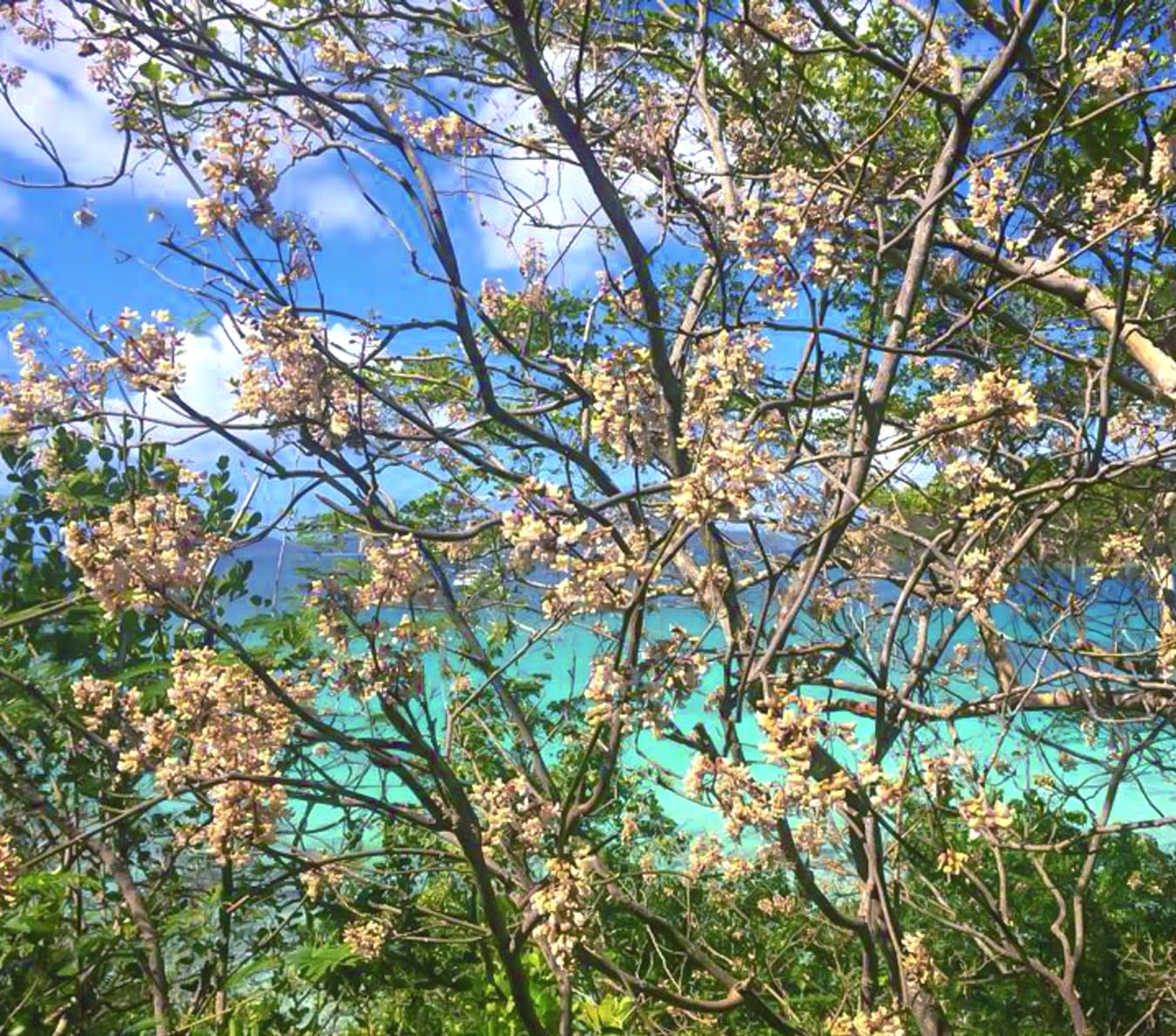
Lignum Vitae (Guaiacum officinale) is a slow-growing evergreen tree that doesn’t seem to mind the dryness or the heat. And it too has medicinal properties. It was called ‘Tree of Life’ in the early 1500s by Europeans desperate for potential remedies after the emergence of syphilis as a major epidemic. Columbus is thought to have learned about the medicinal qualities of this resinous wood in the Caribbean and brought some back with him. It was a more valuable prize than gold for those seeking relief from the suffering and decline brought on by the disease. However, some Europeans also blamed Columbus and his men for introducing the syphilis in the first place.
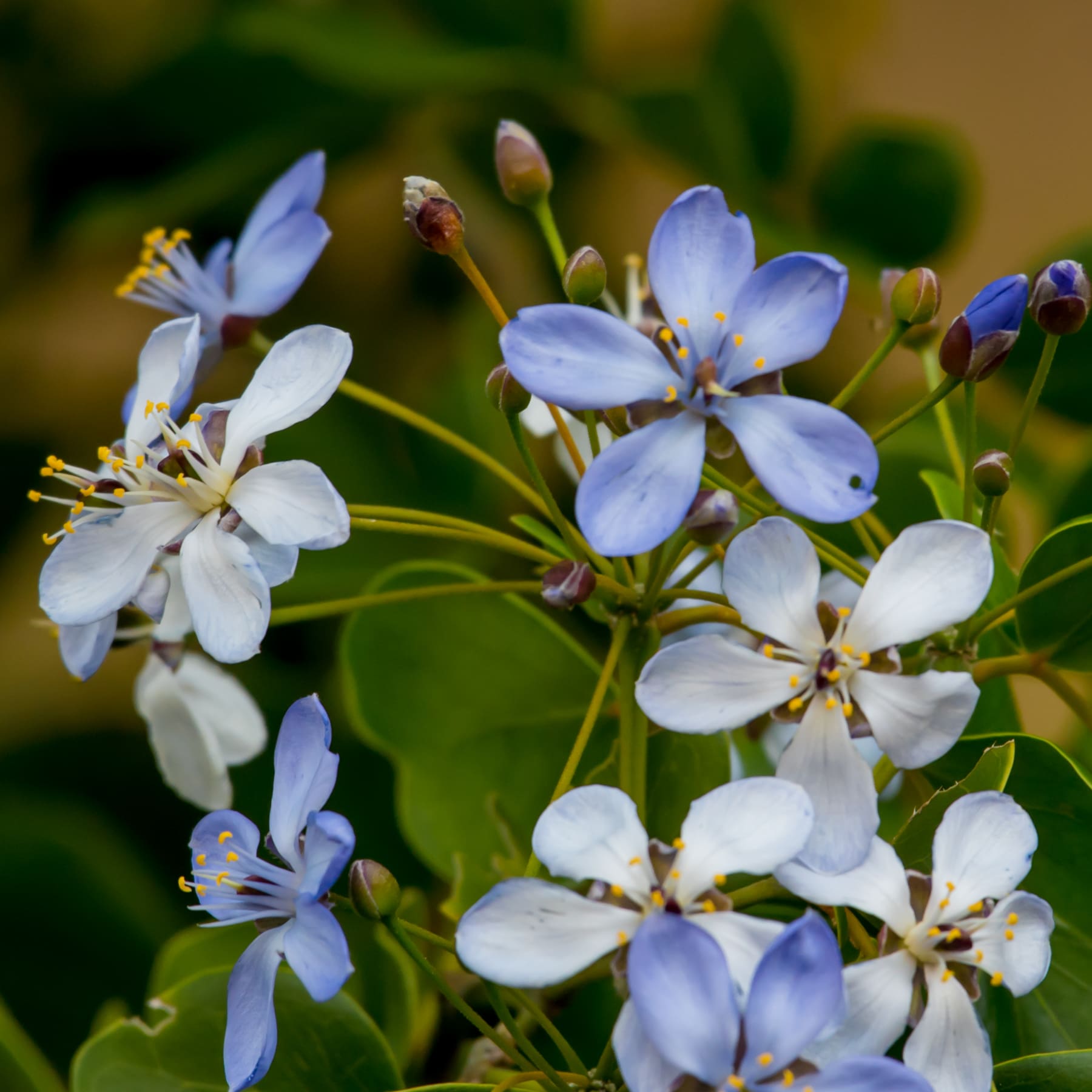
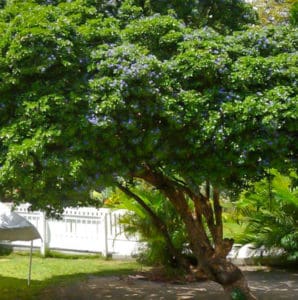
Flamboyant Trees (Delonix regia) really live up to their flashy name at this time of year. They are also called Flame Trees or Royal Poinciana, and are originally from Madagascar. They have been planted throughout the Caribbean, mainly because of their brilliant orange flowers, though they do also have anti-bacterial uses. The Flamboyants have been bare of leaves for a while, but when their crowns are in full flower, they can light up whole neighborhoods.
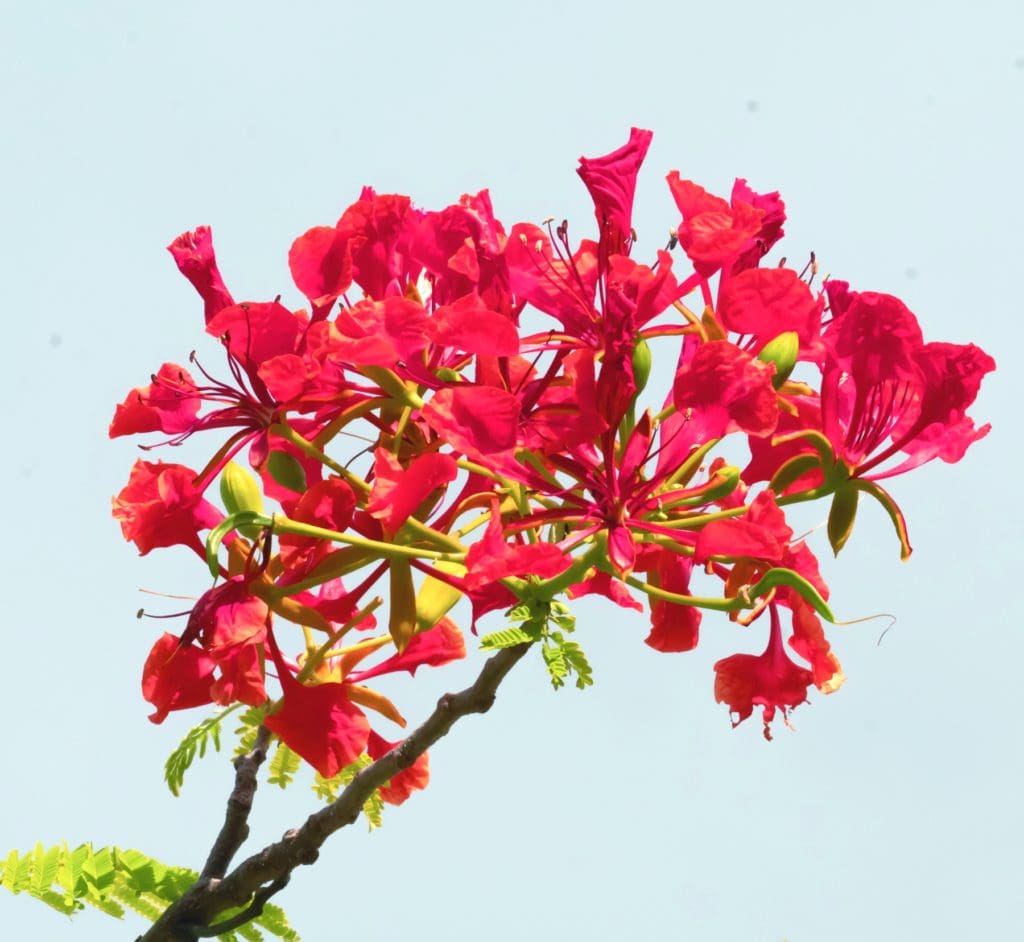
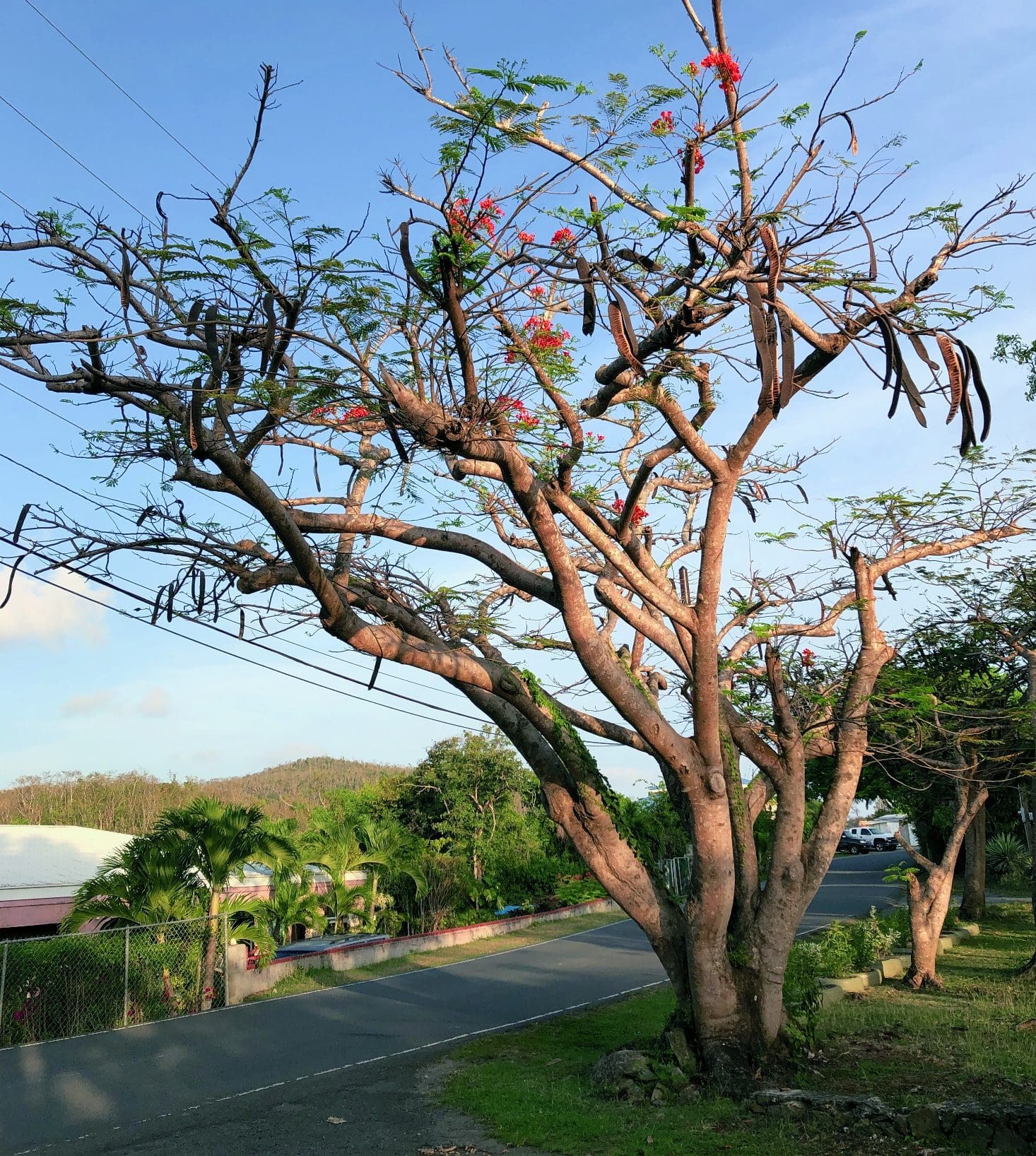
Gail Karlsson is an environmental lawyer, writer and photographer – author of The Wild Life in an Island House, plus the guide book Learning About Trees and Plants – A Project of the Unitarian Universalist Fellowship of St. John. See uufstjohn.com/treeproject and gvkarlsson.blogspot.com. Follow her on Instagram @gailkarlsson





